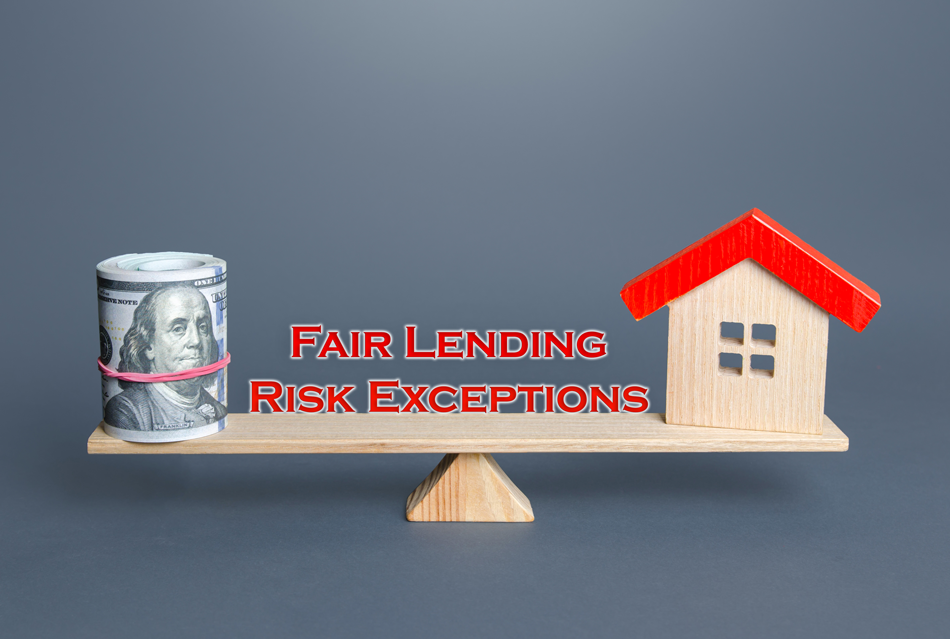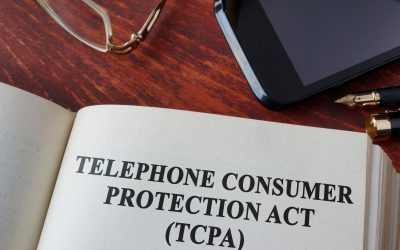You obtain the list of residential mortgage loans for the prior 6 months along with the Exceptions Log, rate sheets, all policies and procedures that discuss originations, underwriting, decisions, and exceptions over the prior six months and you begin your review. You also ensure that you have read-only access to the residential mortgage system at your institution.
You painstakingly review the loans, taking care to create logical and reasonable matched pairs, and review the terms the borrowers received. It doesn’t take long for you to notice several loans where the borrower appears to have received a more favorable rate, all things considered, and this appears to have occurred on loans being kept in the portfolio. Meaning, in this rapidly-increasing rate environment, you took extreme care to match up originations on the same day (more stringent than just doing it for the same week.) Given that extreme care, you still notice some borrowers who appeared to have received more favorable rates. A pattern starts to appear that shows that the borrowers receiving the more favorable rates were white middle-aged men.
You diligently check the exceptions log and are relieved (somewhat) to see each exception logged. But the exception explanation went like this for all of these exceptions: “More favorable rate for Mr. Smith approved by _________ based on the outstanding relationship he and his business has had with the bank over the past “x” years and the potential for him to refer additional consumer and business relationships to the bank.” Same sentence each time, with the borrower’s name substituted and the number of years he’d been banking with the bank. You see Mr. Smith, Mr. Jones, Mr. Sullivan, Mr. Russo, Mr. Beaulieu, and so on. Most were married and for many of the loans, the wives were listed as co-borrowers.
“At least they’re logged,” you say to yourself. But, unfortunately, the log didn’t include the attributes of the borrower that would point to a prohibited basis. In other words, one couldn’t tell from looking at the exception log that every one of these exceptions went to white middle-aged males.
You check minutes of committee meetings where exceptions would be discussed and see that the only discussion was for the head of residential lending to refer the committee to the exceptions log that was included in the meeting packet. “At least the exceptions log went to the committee,” you say to yourself. The log did not go to the Fair Lending Committee, however.
Next you meet with the head of residential lending. You ask about the numerous exception description sentences mentioned above and ask him if every single one of them were really high-potential referral sources, and how the lower rate came to be. The head of residential lending explained that each business owner who received the more favorable rate on his residential mortgage loan really was a fantastic customer of the bank – absolutely the best customer of the bank ever – deserving of such a rate. You ask how the lower rate came to be, and the head of residential lending explains “Well, based on the fact that Mr. Smith (for example) and I had been in discussions about his mortgage prior to the rates going up, we decided in this circumstance to honor the rate that was in effect back when we had the discussions.”
You briefly stare down at your notebook, take a sip of coffee, look out the window – all buying time to gather your thoughts. Then you ask the head of residential lending:
- At any time during the past 6 months did any woman have conversations with you about a mortgage she wanted, and when she moved forward sometime later, you honored the rate you’d discussed?
- At any time during the past 6 months did any Minority borrower have conversations with you about a mortgage they wanted, and when they moved forward sometime later, you honored the rate you’d discussed?
His answer was that he couldn’t possibly remember something like that. He mentions that policy and procedure allows for this type of rate discretion as a courtesy for borrowers. He quickly adds that each loan with a lower rate could have potentially been sold on the secondary market, but they decided to portfolio the loan instead. You ask if there’s a call log or anything that would evidence that borrowers were treated equally in terms of benefitting from this rate discretion. He replied that there wasn’t. He also added that the exception logs go the Risk Committee of the Board. You call attention to the fact that the exception logs don’t include any borrower attributes that could support Fair Lending.
Before you document your observations, you review the list of residential mortgage loan officers. They all appear to be white. You note that the bank is just outside a major metropolitan city.
The above scenario illustrates what Fair Lending Officers already know:
- Exceptions should be appropriately documented within files.
- Management should have a tracking mechanism for exceptions.
- The Exception Log should include prohibited basis information as well as the compensating factors that justify the exception.
- Exception Log reports should be reviewed periodically by management to ensure exceptions are granted in a consistent manner and management has the ability to identify associated fair lending risk.
- Pricing exceptions should be reported to the Board or an appropriate Committee thereof.





0 Comments